










































UPVC



















Locks
Locks
ABS
T:


E: paul@parrottlocks.co.uk




We have had a mixture of weather recently, with cold bright sunny days, as well as some breezy wet days. What do you think our Spring and summer will bring us this year? Last summer was pretty good, so I am ever hopeful (as always) that we once again we will be able to bask in the sun and enjoy some alfresco dining. For now, we can marvel at the snowdrops (my all-time favourites), the bluebells, tulips and golden / white delightful daffodils. Gorgeous. Do you have a spring clean to do? Do you want to change the décor? We did a spot of redecorating ourselves this week. Do you need a carpet cleaned, a tidy of the garden, a new blind for the kitchen, or new windows? Well, our wonderful advertisers here can help you! Take a look through your local magazine and see who you can call to ask for advice and get them to come to you or visit them at their place of work and then let them do the work for you. That is what they are here for.
If you have a summer fete coming up, a barn dance, a community picnic in the garden, a local sing-song or amateur play to perform, please let us know as we can promote these for you for free. Anything which is local and has the purpose of bringing people together we want to support. Let’s get to know our friends and neighbours and create some social time. It makes all that working so much easier and gives us things to look forward to.
Happy March to you all!

Cover photo: Snowdrops in Swanage by Robin Boultwood



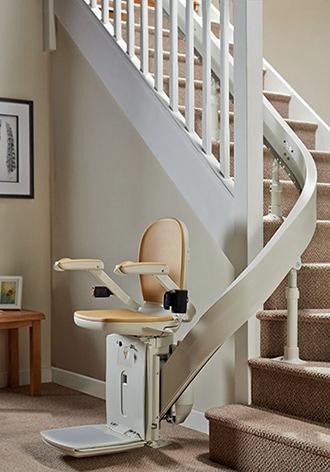
TWAM is a Christian charity that collects donated usable tools of all types, sorts them into trade kits and then sends them a growing number of countries, including Malawi, Uganda, Zambia, Zimbabwe and DR Congo. Each year they send around 18 containers packed with refurbished tool kits to Africa and help to transform communities through running skills centres, training and the provision of tools.
This year there is a new Volunteer Collector in the Purbeck area, my husband Richard, so it is now easier to donate any surplus or duplicate tools which you may have gathered over the years. TWAM are always in need of the following:
• Agricultural/gardening tools - Fork, spade, hoe, hand fork/trowel, lopper, secateurs, handshears
• Builders’ tools – 3’ spirit levels, spade, axe, crowbar, fork, sledge hammer, hacksaws, chisels, tape measures
• Carpenters’ tools - bevel, braces, clamps, hand drills and bits, files, hammers, saws, planes, pliers, screwdrivers, spanners, Stanley knife, nails, bolts, screws
• Electricians’ tools – allen keys, hand drills and bits, all types of pliers and hacksaws, screwdrivers, spanners, soldering iron, voltmeter
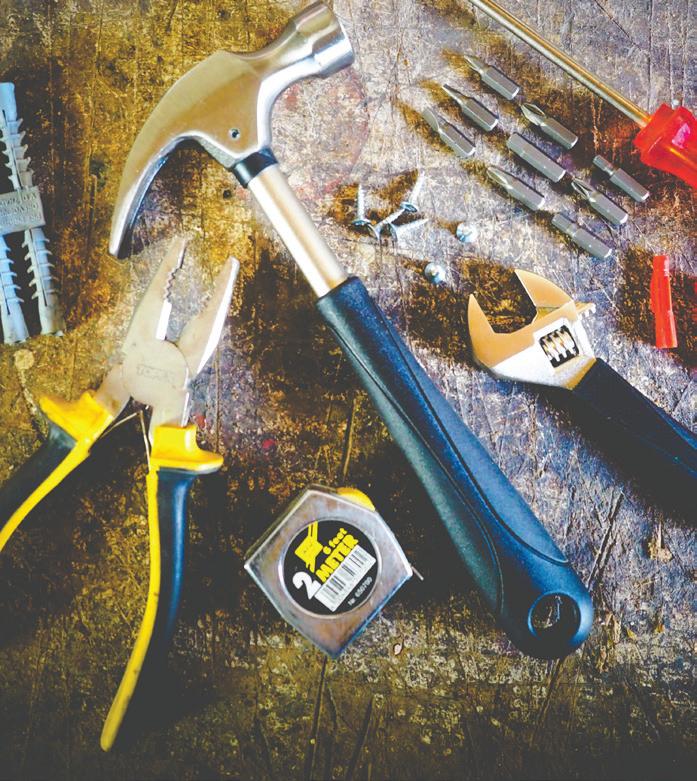
• Motor mechanics’ tools - allen keys, spanners, cold chisels, metric socket sets, punches, cantilever toolboxes, tyre pressure gauge
• Plumbers’ tools -basin or tap wrench, wire brush, breast drill and bits, grips and saws, screwdrivers, oil cans
• Garage workshop - hydraulic jack, axle stands, battery charger, ramps, engineer vice
• Power tools- hand and bench drills, sander, planer, jigsaw, circular band and chop saws, lathe, cultivator, rotavator, welding machine, generator
• Sewing machinesmanual, electric, treadle and industrial machines
• Knitting machines - machine and hand wool, knitting needles, patterns
• Haberdashery - needles, cottons, large material pieces/rolls, buttons, zips, tapes
• Fully working IT equipment – desktop computers laptops running minimum of Microsoft Windows 7, tablets, networking switch routers, cables (not printers or scanners)
• Bibles - in modern English
We are able to collect your donations of any surplus equipment listed above if you email Richard to arrange a suitable time. We cannot take broken tools, or any with woodworm, but old metal tools can be sharpened and surface rust removed. Please have a look at the TWAM website for more detailed lists and discover how these items will provide a future and transform lives in struggling African communities.
Local collector – email: richardf@twam.uk

07590 903922
Main website - twam.uk
Hopefully as you spring clean or reorganise sheds and garages to accommodate any new acquisitions, you will find plenty of items that can be well used abroad, rather than gathering dust locally. If you know somebody who is downsizing or moving into a flat, please pass on our details. Keep an eye open for TWAM lists on local noticeboards.











Looking back 60 years to Dr Beeching’s infamous axing of a quarter of the UK’s rail network.
Many of us know the name Dr. Beeching. He has become the track tyrant of a past generation – a man who heartlessly cut a blade through communities in much the same way the rail lines he decommissioned had done through countryside and rural towns.


History will show that the publication of his first report, titled The Reshaping of British Railways, on March 27th 1963, some 60 years ago – and a follow-up two years later – sounded the death knell for a quarter of the UK’s railways, and disconnected overnight a number of towns, villages and hamlets from their neighbours.

In many ways Beeching became the punchbag for arguably one of UK transport’s most sensationally unpopular moves, yet was the label unfair? After all, the railways were in deficit to the tune of up to £100million a year – a wholly unsustainable mass of loss-making lines which were rapidly finding the marvellous motorways a formidable form of competition, as motorcars and freight trucks took footfall away from the trains. Hence, by the time Beeching – a physician and engineer with ICI – was appointed as British Railways chairman in 1961, the network was already in dire straits.
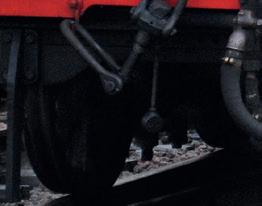
What’s more, the closure of routes had already been happening long before his weighty


report landed with the Ministry of Transport. Three thousand miles of lines had been axed since 1948, so while these new proposals were the most severe yet, they weren’t the first.
A good number of the 2,363 stations and 5,000 miles of track earmarked in the report for closure were in fact given a reprieve, such was the political, social and economic pressure the government found themselves under; and there were also positive recommendations in the report which, for the first time ever, documented a country-wide view of the railway system, and brought about firmer management of lines, operators, passenger welfare and general demand.
Wind forward to today and investment in our railways has never been greater. Network Rail has also worked hard to reinstate rural and local railways - at present there are over 60 Community Rail Partnerships in operation. Not only are these important to the communities they serve, but profitable too!
greater. railways
While it still has a long way to go, Britain’s railway network is once again the fastest growing in Europe and busier now than at any time in the past hundred years. The question has to be asked if this is because of, or despite, the infamous Beeching.
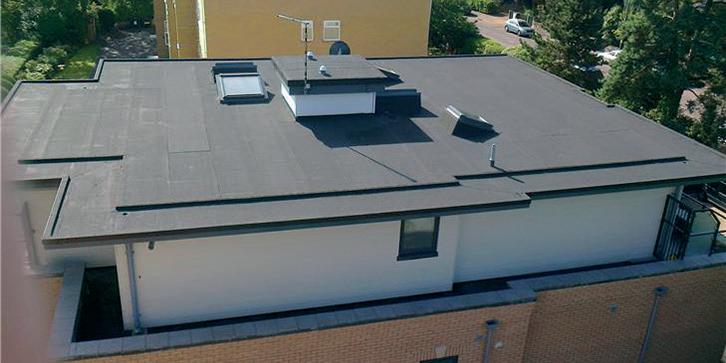














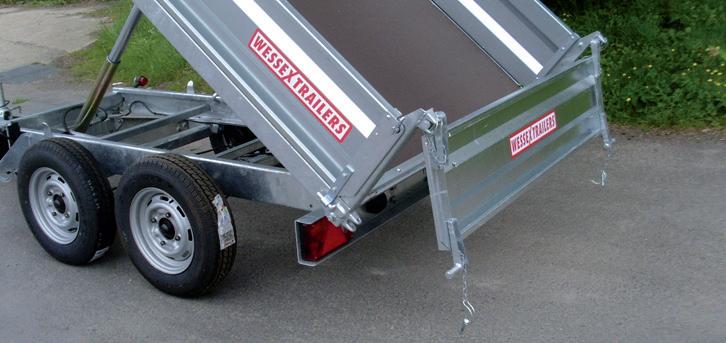

Via a galaxy far, far away, film star John Boyega is back within a few miles of where it all began - Peckham’s hottest property has been subtly talking up an Attack the Block sequel, something which reveals a few things about the 30-year-old social justice champion.


For many cinemagoers, John Boyega’s unveiling to mass popular culture was in the opening shot of the very first teaser trailer for 2015’s Star Wars: The Force Awakens, which attracted a recordbreaking 58 million YouTube views in its first week.
Past that, Boyega has strengthened his allegiance to the Star Wars brand in almost every way possible, as well as finding time to tread the boards, effectively making a
return to where his acting career started, describing his 2017 appearance in Woyzeck as “like riding a bike”.
“You’re on the stage and suddenly the lights are on and there’s an audience either clapping or throwing tomatoes at you,” he begins. “You have to adjust from being on a film set as there’s only one take!”
Boyega now looks to take that reconnection even further with the much talked-about return of Attack the Block, which came before Star Wars, albeit to a much more limited audience. The original 2011 sleeper hit became a cult film and launched both his and director Joe Cornish’s careers.
It’s therefore with some element of sentimentality, perhaps, that the multi-millionaire actor accepts the invitation to do it all again, at a time when his public profile suggests he should be doing something more status-driven.

“There is a romantic element to this, I don’t deny it,” he says. “You always want to reignite how the past feels, and it
gives you some perspective and appreciation of how far you have of come.
“No-one is doing this just for kicks. We are serious and we want to create something that isn’t just part of a sentimental journey. And it will be good. Better than good!”
Boyega’s return to the council estate also belies a growing reputation that he has become a stereotypical mouthpiece for a minority. “The things that matter to me – racism, equality, fairness – have mattered to me all my life,” he explains.
“I have never removed myself from who I am or what I stand for. What I do think is that the media are very good at painting you in one light, and that can be the go-to headline for everything you do.
“I don’t want to be that person,” he admits. “Sure, I want to champion equality, but that is not everything I stand by and stand for, and I think most people who know me, know that.”




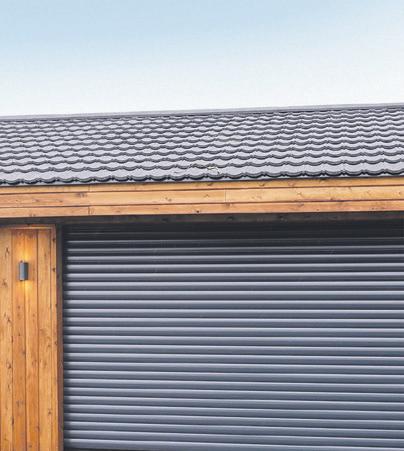

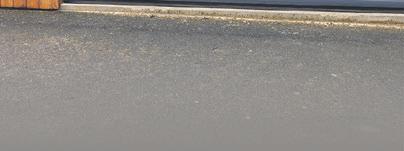
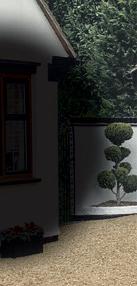

BSO On Your Doorstep - From the Hebrides to Padstow.
Artsreach and Bournemouth Symphony Orchestra proudly present a special concert at The Mowlem in celebration of the sea.
Performed by an ensemble of 14 players, this evening of specially arranged music with feature pieces ranging from Handel’s Water Music and Mendelsohn’s Fingal’s Cave to Sea Shanties, Beatles classics, Malcolm Arnold and an instrumental arrangement of Adele’s Rolling in the Deep.
Wednesday 8th March at 7.30 pm
My Fair Lady
Presented by Swanage Musical Theatre Company, be enchanted by one of the best-loved musicals of all time. Based on George Bernard Shaw’s play ‘Pygmalion’, My Fair Lady takes you back to Edwardian London. Henry Higgins accepts a bet that within six months, he can transform the coarse Cockney flower girl Eliza Doolittle into a proper lady and “pass her off as a Duchess at an Embassy ball” But who is really being transformed?
Thursday 23rd, Friday 24th and Saturday 25th March at 7.30 pm
National Theatre Live: Life of Pi
Filmed live in London’s West End and featuring state-of-the-art visuals, the epic journey of endurance and hope
is bought to life in a breath-taking new way for cinema screens. Puppetry, magic and storytelling combine in a unique, Olivier Award-winning stage adaptation of the best-selling novel.
Thursday 30th March at 7.30 pm
EVENTS IN THE SHOWBAR
(Upstairs at The Mowlem)
Rock ‘N’ Roll Bingo with Oscar Quiz night and Rock ‘n’ Roll Bingo with Oscar are back after a fantastic first run. There are many prizes to be won, and it’s just £1 per person to enter.
Thursday 16th. Doors Open at 6 pm, Quiz starts at 8 pm.
‘Formation’ - The next Visual Arts exhibition is from Sally Maltby. Moving to the Jurassic Coast was a revelation to Sally, who has always been fascinated by rocks and their formations and the colours and history, expressing the seemingly permanent affected by accelerated erosion.
The exhibition will be free to explore from January 27th through March 21st.
Tickets for live shows and movies are bookable from the front page of www.themowlem.com



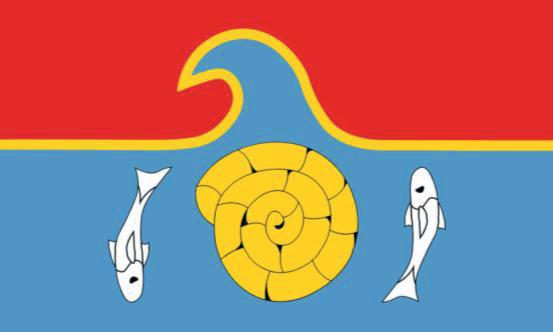
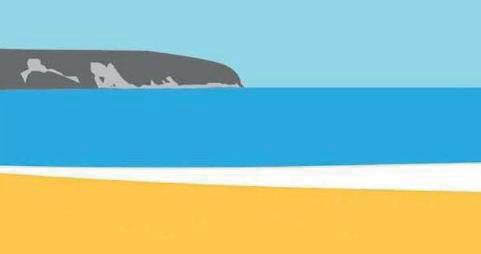

























































The UK’s cost of living crisis has seen the average household’s energy bill increase to around £3,500, as we experience the highest inflation rates in 40 years, so is it time to turn away from the oven and invest in one of these more energy-efficient cooking appliances?
With up to 10% of your energy bill spent on kitchen appliances, it follows that cooking with more energyefficient appliances could save you hundreds of pounds a year. Here we explore the most efficient alternatives, from the ubiquitous microwave to the humble slow cooker.

When it comes to hobs, much like your oven, gas is cheaper, but electric is more effective.
A lot of heat is lost into the room with gas, but the difference in cost makes the result negligible.


However, an induction hob is incredibly efficient because there is no energy lost around the pan (even electric ceramic plates waste heat), so if induction is an option, go for it.
Microwaves use up to 80% less energy than a conventional oven and cost as little as 8p a day to run. The downside of
course is what you gain in speed and convenience, you lose in versatility. However, it may be worth switching to your microwave when cooking vegetables, pasta and poached eggs, over boiling big pots of water on the hob.

It’s official, slow cookers are back in fashion, and with good reason. Not only have they been found to run on as little energy as a lightbulb, they are also great for feeding a family and can make tough cuts of meat such as beef shin and brisket tender and delicious.
They are also very hands off, meaning you can throw the ingredients in and leave it for hours!
A relatively new invention, air fryers are essentially small convection ovens, making them ideal for small jobs such as cooking frozen fish fingers for your child’s tea or heating up a small pie for lunch.
Also, as the name suggests, the air fryer makes superbly crispy chips with a lot less energy than the oven… and a lot less oil than a traditional fryer.

Pressure cookers can save a huge amount of energy compared to traditional cooking methods, simply because they get the job done so much quicker.
They also make cheap ingredients – low-quality cuts of meat, dried beans and pulses etc. – into meals fit for a king.
The one downside of the pressure cooker is that they take a bit of getting used to, especially as the pressure releasing process can be rather scary!


Across Clues:
1. Brandenburg Gate is here (6)
5. Sadden (6)
10. White fleshed nut (7)



11. To surrender (7)

12. Preoccupy (6)

14. Permanent artwork (6)
15. Take action (3)
16. Plant with large flowers (4)
19. Young insect (4)
20. Of crucial importance (7)
21. Small wingless insect (4)
23. Fail (4)
27. Time of existence (3)
29. Surviving (6)
30. View films (6)
33. Rail-like wading bird (7)
34. Indigenous lore; fundamental life force (7)
35. Sin of ___ meaning lack of care. (6)
36. Measure the volume (7)
Down Clues:
2. Deferral (7)
3. Woolly (6)
4. Short letter (4)
5. Saucer (4)
6. New layer (6)


7. Moving fluid in an enclosed line (7)
8. Institution (6)
9. Soak (6)
13. Selfish person (7)
17. Strike (3)
18. Cereal grain (3)
21. Lacking physical strength (6)
22. Relating to insects (7)
24. Tendency to do nothing (7)
25. Act (7)
26. Past; long and thin reptile (6)
28. Small seal (6)
31. Russian beauty working for the KGB (4)
32. Leave out
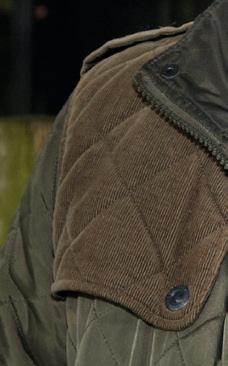


Designer, writer and television presenter, Kevin McCloud leapt into our consciousness with his vastly successful Grand Designs show on Channel 4. This month, the affable architectural business owner talks about his favourite room in the house.


I often get asked what I believe is the most important room in any building and my answer is always the same – it’s the toilet!
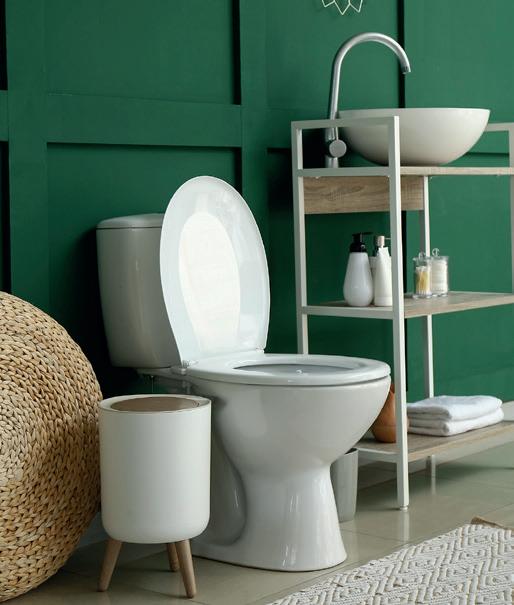
Now then, I know that’s not the most glamorous of answers, but think about it - you can make a house or a building with any number of rooms; you could create a home with no lightbulbs and perhaps not even a single window; yet without basic sanitation you could never remain there.
Without running water, you have almost no chance of survival without risking poor health, disease and, ultimately, death.
I’m seen the evidence of this, too. I’ve visited places in the world where running water and basic sanitation doesn’t exist; where the absence of those two things creates utter chaos and would eventually bring about the end of civilisation as we know it.
The point of all this is that in this world of ambition and desire, and in our pursuit of homely perfection, we can very quickly and very easily lose sight of the true basic necessities that enable us to evolve and survive as human beings.
It’s for that reason that someone moving into a shoebox studio flat in a grubby backstreet in a dead-end town can actually feel like they have achieved something monumentally big…
and they would be absolutely correct in that notion.
When you have somewhere that offers sanitisation, somewhere to eat, somewhere to sleep – you essentially have created the building blocks preservation of life. That’s tremendously exciting, very special and, rightly, the most rewarding feeling you can have.
In the coming year, we will all dream and plan and design… and do all those other things as far as the perceived improvement of our homes is concerned, and of course that’s the way we are as people – we are almost always forwardthinking and aspirational.
However, sometimes, it really is rewarding to take a step back – to look not at what you don’t have, but what you do have. It’s to say, ‘I am here, and I am covered’.
To have the basic necessities in life is actually 99% of survival and success… everything else on top is just decoration.

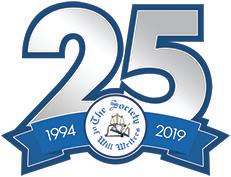



I think you know how much we love the sea and outdoor living. Well Daichi was very generous last month and booked us a trip on the MSC (Mediterranean Shipping Company) cruise line, the Grandiosa! We have never been on a ship so big. Oh my, there are enough rooms for up to 6000 passengers as well as several thousand crew. It is magnificent with shops, a chocolate cafe, where they make their own chocolate, restaurants, spa, two theatres, bars and an ice-cream parlour, which of course we had to try… after all it is competition to our own ice-cream and waffle parlour in Weymouth, Wafflicious! I think I am getting a little over excited there… But really it is a splendid vessel. The crew are incredible. From all over the world and each has their own story.
We flew to Rome and got a taxi to Civitavecchia an hour away, where the port is. Staying overnight is a good idea as it takes away the stress of travelling, we find. Especially as this time we were in the plane for three and a half hours before we took off! Better to be safe than sorry though, I would say.
We had a leisurely morning, including coffee and a pain au chocolat at a local bijoux cafe. Just had to be done - we really were now on holiday. Once we were through customs and all the checks were complete, we very excitedly found our cabin and dropped our hand luggage off. The big cases were taken on board
by a crew member. We were on the thirteenth floor! Balcony and all. At 5pm off we set. You can hardly tell you are moving, but at night, being so high up there was an unusual side to side motion which I actually found quite soothing after I got used to it.

Palermo in Sicily! Our first stop. Having never been here before it was a delight to see. Stephen and I decided to take our own tours. The ship does provide great excursions, but we wanted to be independent. Google not only tells you where you can go but also how long it takes to walk there, so we (well actually Stephen) were able to work out exactly what we could do and how much time we had. We walked all the way around the centre of Palermo. The twelfth century cathedral is splendid. The horses and carts are delightful. The Massimo Theatre is glorious. I could really feel the splendour, opulence and dramatic setting of this magnificent Italian town. We so enjoyed our walk, gazing in awe, and of course the coffee sitting in one of the narrow streets complete with small, elaborate balconies and music you could almost hear from times gone by.
Malta was our next stop. After an evening of dining and on-board entertainment, we slowly and majestically arrived at our next destination. My dad was in Malta as part of his two-year conscription many years ago. There is a concept… compulsory enlistment, in his case, into the Royal Navy at the age of eighteen. He remembers it well. Today the
 An ice-cream sundae... Grandiosa style!
An ice-cream sundae... Grandiosa style!
area has many museums and artifacts in memory of the second world war. There are even hidden underground passages you can now visit, that were once used by important military leaders and politicians. Lots to do. We chose again to take our own path and in fact we walked over 20000 steps that day! A glorious walk around Valletta with fantastic views across the bays. The new square surrounded by street food vendors and a really attractive fountain were in contrast to the military background and gave you hope for the future.
A day’s sailing was next on the agenda! We chose to have a spa day and watch a movie while we glided our way through the deep waters of the Mediterranean. So relaxing.
Barcelona in Spain was our next destination. My parents had their honeymoon 59 years ago in this amazing city. As I was born early and 3 weeks less than nine months later, I do laugh and say, “I was made in Barcelona!” La Sagrada Familia is quite a feat. I thought there were building new on top of old and was dismayed, however that is not the case at all. It is still not complete and is the largest unfinished Catholic church in the world. Started in 1882. The new architecture is looking quite splendid and complements to older stones well. I always remembered that mum and dad went to a bull fight all those years ago, so a walk to Plaza de Toros Monumental de Barcelona was a must for me. It is quite an eerie place really. You can walk in the footsteps of both the matadors and the bulls, as well as enter the ring itself. Cultures change and it is interesting to see old traditions and look back on history, where we were and where we have come from.
The next time we got off the ship was at Genoa! Another unknown town to us and one we really
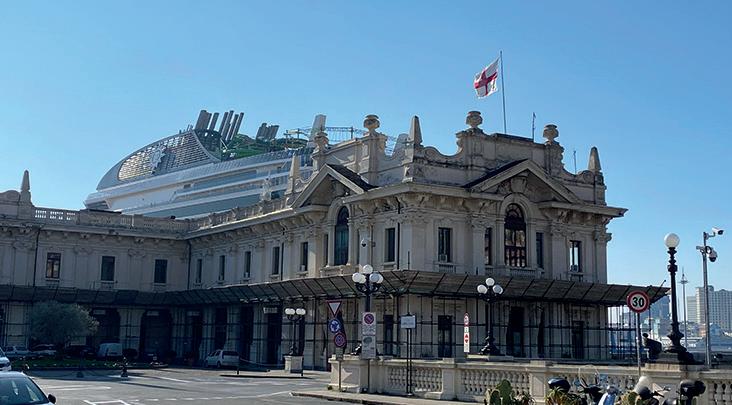
enjoyed walking around. We did not go in the huge aquarium there, but I hear it is highly recommended. Did you know (a bit controversial) that ‘our’ St George’s flag was apparently ‘stolen’ from here? We saw the flag a few times, flying high, and according to Google… “The symbol was adopted by England toward the end of the religious wars, in the 13th century with our ships flying the flag of Genoa as a deterrent to enemies.” Oops… Again, how interesting our history is.
Well, it was time to take our last cruise back to Rome. On disembarking we had a day to explore. Sitting, overlooking the Colosseum having an Italian lunch was awe inspiring. It ended our eight-day, seven night break on a high.
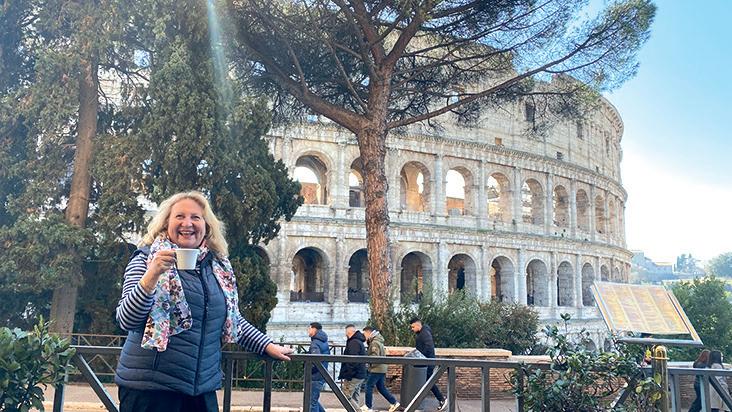

Sailing is not for everyone and certainly I would generally prefer a smaller ship, but we thoroughly enjoyed our self-generated European excursions, coffees in places we had never been before, nights singing to Abba, Italian Opera and the Addams Family in the all-inclusive entertainment each evening. Waited on hand and foot in the restaurants and having as much food as you want in the buffet. We love cruising. Let’s see if Daichi can top that this coming month!
By Debbie Corney A bull’s eye view inside the Monumental

He’s a brilliant presenter, accomplished gardener, talented novelist, and allround horticultural inspiration. This month, Alan Titchmarsh discusses garden design and spontaneity.
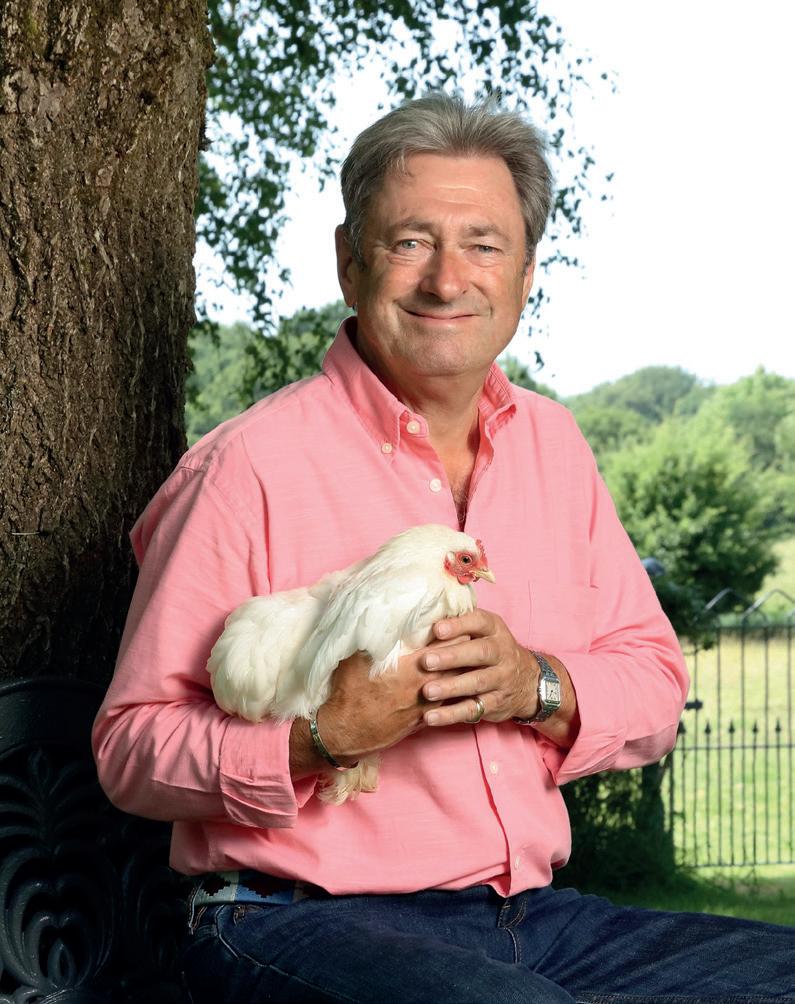
They say that a builder’s home is always unfinished, and much the same is true of any gardener in regards to his or her outside space.
We have been in our current home for almost 20 years, and I am still evolving, adding, altering – every day. And that’s what makes each passing year so special – the fact you never go back to a blank canvas, but each spring there are new opportunities, ideas and spaces that emerge here and there, that can be formed into whatever takes your fancy at that particular time.
While variety and versatility are definitely important in a garden, I do find it’s necessary to follow some familiar boundaries. One
of those, for me, is to ensure the inspiration for the style of my garden comes from the feel of my house, and I think this is true for any

outside space. The two must complement each other or you may find you end up with an awkward juxtaposition between the building and nature.
So my property is a classic, square Georgian farmhousethus I felt I had to do something that complemented that in the garden. I like straight lines anyway, which cross each other, and have softened this by planting throughout, creating a sort of billowing chaos in beds and borders. You essentially have one giving structure to the other.
Remember, gardening is very different to
architecture, because what you are dealing with isn’t just shape and form, it’s time as well –it’s a rapid adjustment and change between how something looks on day one and how it will look on day 100.
And while I know you’ll hear gardeners talking all the time about planning out an area, the types of plants you’ll have, and the tone and feel of a space; very often the reality is you are inspired by something off the cuff, and it is that instinctive appeal that’s exciting.
Whatever you’re going to do in your garden space, I would suggest it is gradual and over time. It really pays to observe and watch how nature embraces things – see what grows and what outgrows, and only when you are absolutely sure you want to adjust a certain area, only then proceed.

It’s about a steady progression rather than the wholesale demolition… such is life!

Near Corfe Castle (on main A351)
Tel: 01929 480098








Large selection of Roses, Shrubs, Perennials, Bulbs, Herbs, Flower & Vegetable Seeds, etc
Terracotta Pots – Ornaments
Composts – Bamboo Canes
Locally coppiced bean poles and pea sticks
Due May 2023 – Summer Bedding and Basket Plants – Herbs and Vegetable plants


Local produce, including:
Free Range Eggs – Bread – Cakes
Honey – Jams – Chutneys – Meat
Ales – Cider and Wines
Equestrian – Animal and Pet feeds & accessories

Wild Bird Feed & Feeders

Nestboxes - Bug Hotels
Hedgehog Houses
Please check our website for updated stock and prices: nordenfarm.com


OPEN 7 DAYS A WEEK
Ample Parking & Assistance with loading
Quick Crossword Solution #025
Answers:
Across: 5. Antishock, 8. Feta, 9. Eventual, 10. Cadence, 11. Renew, 13. Stint, 15. Treason, 18. Oragious, 19. Sash, 20. Skimboard.

Down: 1. Inhale, 2. Silence, 3. Thief, 4. Scathe, 6. Recapture, 7. Gatehouse, 12. Erosion, 14. Nogaku, 16. Assort.

1) 11
2) 10
3) 5
4) 11
5) 7
6) 15
7) 13
8) 45-50 (11 on at a time)
9) 11 10) 6

Welcome to the March Stargazing Page. Highlights this month include a close meeting of the brightest planets in the Solar System and Orion the Hunter still visible high in the southwest.
The ISS can be spotted early in the morning until the 11th. Viewing then switches to our evening skies from the 16th. To establish exact timings please refer to www.heavens-above.com or a similar webpage for up-to-date information, remembering to set the location to your observing area.
Venus and Jupiter appear extremely close to one another (known as a conjunction) in the early evening western sky. The closest they reach is on March 1st, after which the planets will slowly separate. This conjunction can easily be seen with the naked eye, but a pair of good, steady binoculars may allow you to spot some of the moons of Jupiter.
The start of longer daylight hours commences on March 20th at the Spring Equinox. This marks the first of two dates (the second being the Autumn Equinox) when daylight hours equal the number of night-time hours, wherever you are on Earth (equinox comes from the Latin meaning ‘equal night’). The equinoxes are the best time of year to determine the main compass point directions relative to your own home, as the Sun rises due east, sets due west, and is due south at midday. Try remembering these positions relative to a building or a tree.
Moon
March’s full moon occurs on the 7th.
The innermost planet is too close to the Sun to be seen this month.
Venus
Venus continues to dazzle in the southwest every evening and will be impossible to miss! At the start of March it sets around 8.30pm, but by month end it is sinking below the horizon as late as 11pm. It is close to the Moon on the 23rd and 24th (see figure).
Mars
The red planet can be seen above the constellation of Orion until the early hours of the morning, and although getting dimmer every day, is still a bright object.
As the Sun sets, Jupiter is visible low towards the southwest. By the end of the month it will be lost in the Sun’s glare. Saturn is too close to the Sun to be visible this month.
Diagonally across from Rigel, February’s Star of the Month, we find Betelgeuse, the tenth brightest star in the sky. It marks the right shoulder of Orion the Hunter, and its name stems from the Arabic for ‘hand of Orion’ (see figure). It is a red supergiant that is much cooler than our Sun; its surface temperature is 3,500°C. Betelgeuse is an enormous star at the end of its life, and if it were to replace our Sun at the centre of the Solar System, its surface would extend to at least the orbit of Mars. Put another way, if the Sun were the size of a grapefruit, then Betelgeuse would be the size of a large football stadium. Like Rigel, it will end its life in a giant explosion known as a supernova, leaving behind a neutron star or a black hole. On a night with no moon, see if you can notice that Betelgeuse is noticeably more orange than nearby stars.


Famed for the gigantic, raspberrydusted meringues that adorn his shop windows, Yotam Ottolenghi is a patisserie expert, and these deliriously fudgy cookies are no exception.

(makes 24 cookies)
• 110g unsalted butter at room temperature, cubed
• 110g caster sugar
• 1 large egg, lightly beaten
• 125g plain flour
• ½ tsp baking powder
• 20g cocoa powder
• ½ tsp ground cinnamon
• ¼ tsp salt

• 100g 70% cocoa chocolate chips (or 100g dark cooking chocolate in 0.5cm pieces)
• 50g mashed banana (½ small banana)
• 170g pecan halves, finely chopped
• 100g icing sugar

1. In the bowl of an electric mixer with the paddle attachment in place, beat the butter and sugar on a mediumhigh speed until light and fluffy, then add the egg and beat to combine.
Sift the flour, baking powder, cocoa powder, cinnamon and salt into a bowl, then add to

the butter mix, beating on low speed for 15 seconds. Now beat in the chocolate and banana until combined, then transfer to the fridge for two hours to firm up.
2. Once firm, form the dough into 24 3cm balls, about 20g each. Put the pecans in a bowl, then drop in each ball, rolling it around to coat, which will press the nuts in as well, so they stick.
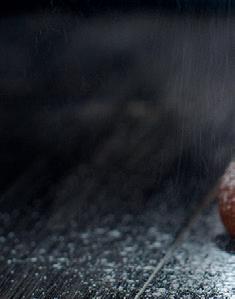
Put the cookies on a baking tray lined with greaseproof paper and refrigerate for at least an hour.
3. Heat the oven to 190°C/375°F/gas mark 5 and line two oven trays with baking paper. Put the icing sugar in a bowl and roll the cookies one by one in the sugar, pressing it in as you go, so it sticks. Arrange the cookies on the trays 2-3cm
apart, then flatten them to about 1cm thick.
4. Bake for 10 minutes, then remove: the cookies will be soft to the touch. Leave to cool for 10 minutes, then move to a rack. Serve warm or cool.
Maintain that fudgy factor by ensuring you don’t overbake these cookies.
You can also freeze them for up to three months once you have rolled them in to balls. Simply add one extra minute on to the baking time when you are ready to use them.

















